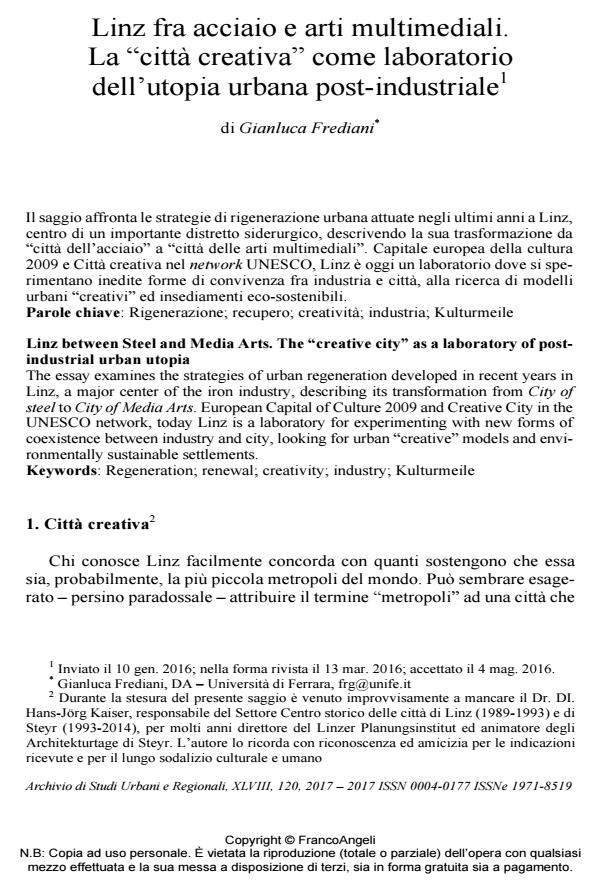Linz fra acciaio e arti multimediali. La "città creativa" come laboratorio dell’utopia urbana post-industriale
Titolo Rivista ARCHIVIO DI STUDI URBANI E REGIONALI
Autori/Curatori Gianluca Frediani
Anno di pubblicazione 2017 Fascicolo 2017/120
Lingua Italiano Numero pagine 20 P. 121-140 Dimensione file 139 KB
DOI 10.3280/ASUR2017-120006
Il DOI è il codice a barre della proprietà intellettuale: per saperne di più
clicca qui
Qui sotto puoi vedere in anteprima la prima pagina di questo articolo.
Se questo articolo ti interessa, lo puoi acquistare (e scaricare in formato pdf) seguendo le facili indicazioni per acquistare il download credit. Acquista Download Credits per scaricare questo Articolo in formato PDF

FrancoAngeli è membro della Publishers International Linking Association, Inc (PILA)associazione indipendente e non profit per facilitare (attraverso i servizi tecnologici implementati da CrossRef.org) l’accesso degli studiosi ai contenuti digitali nelle pubblicazioni professionali e scientifiche
Il saggio affronta le strategie di rigenerazione urbana attuate negli ultimi anni a Linz, centro di un importante distretto siderurgico, descrivendo la sua trasformazione da "città dell’acciaio" a "città delle arti multimediali". Capitale europea della cultura 2009 e Città creativa nel network UNESCO, Linz è oggi un laboratorio dove si sperimentano inedite forme di convivenza fra industria e città, alla ricerca di modelli urbani "creativi" ed insediamenti eco-sostenibili.
Parole chiave:Rigenerazione; recupero; creatività; industria; Kulturmeile
Gianluca Frediani, Linz fra acciaio e arti multimediali. La "città creativa" come laboratorio dell’utopia urbana post-industriale in "ARCHIVIO DI STUDI URBANI E REGIONALI" 120/2017, pp 121-140, DOI: 10.3280/ASUR2017-120006